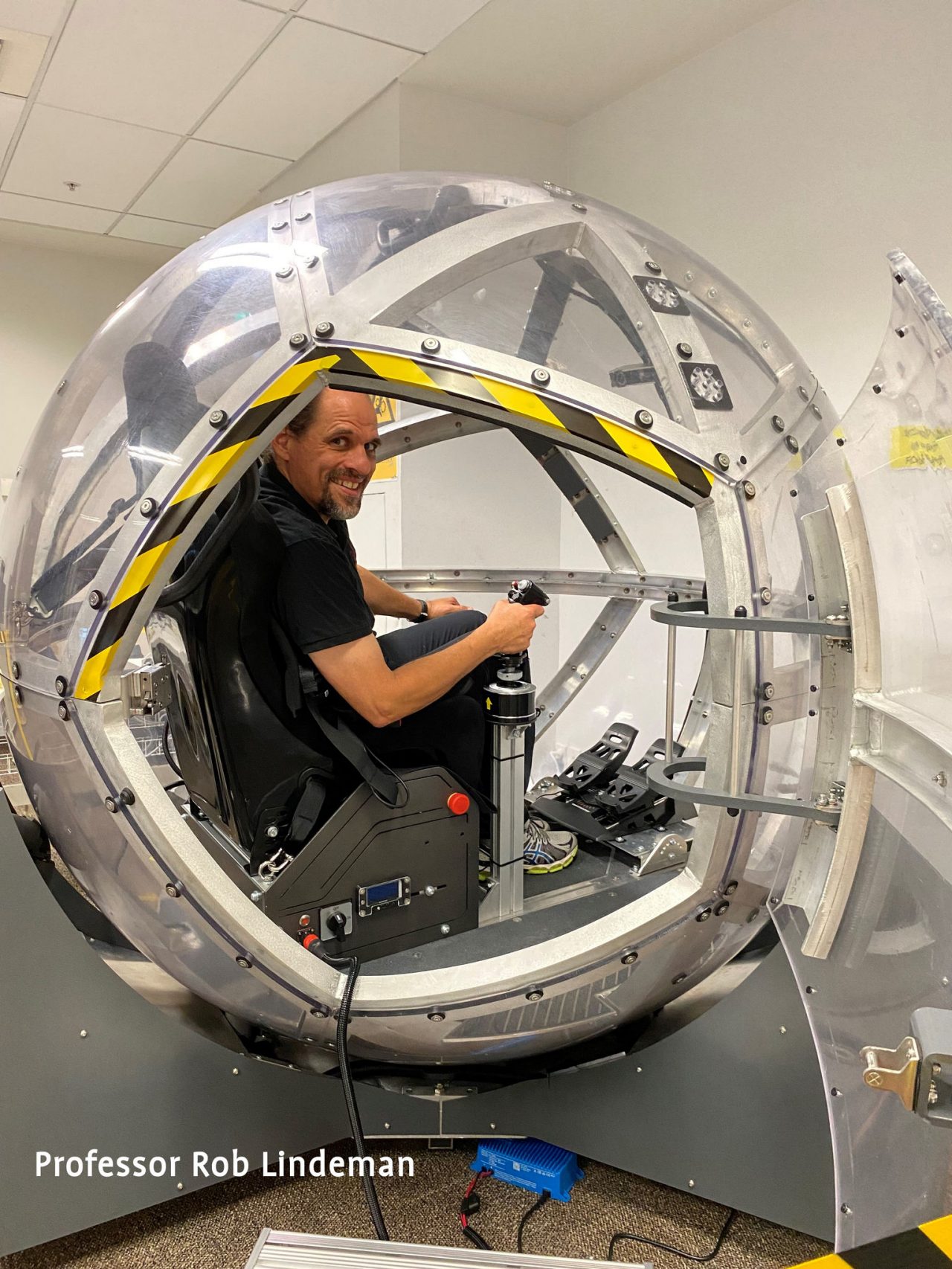Professor Stephan Lukosch's team worked on recreating the slopes at Zhangjiakou, China, with virtual reality technology for the 2022 Winter Olympic and Paralympic athletes to help with their preparations.
Known for its work in Virtual Reality (VR), Augmented Reality (AR), games and human-computer interaction, the lab actively works on using technology to solve real life problems, many brought to them by external companies.
The HIT Lab NZ receives support from philanthropic donations as well as corporate partnerships, and the lab also receives funding from many different companies and organisations such as Fire and Emergency NZ (FENZ) to find solutions using VR, AR and games.

“We’re a very applied research lab,” said director Professor Rob Lindeman. “Many organisations come for service and advice. They know they want to use technology to change the way they do things, but they don’t really know enough about the technology, so they come to us. We understand the technology, how people use it effectively, and can give them some options.”
The Lab’s research is varied and spans across many industries, from firefighter training to creating convincing indoor AR fireplaces.
Last year, a team from the HIT Lab NZ led by Professor Stephan Lukosch worked with Kiwi athletes competing in the 2022 Winter Olympics and Paralympics.
Due to COVID-19 travel restrictions, athletes were unable to access the competition locations before the events.
Funded by High Performance Sport NZ and using VR technology , Professor Lukosch’s team recreated the slopes and the preparation areas so they could visualise and prepare their runs.
“It was very stressful but rewarding,” Professor Lukosch said of the experience. “For the athletes in the Paralympics, we created a simulation of the slope and went to [the HPSNZ’s Wanaka Performance Centre] to test it out.”
The three athletes who used the simulation for the slope remarked they felt that they really were there and they moved as if they were on the slope in Beijing. However, it was only when he saw Corey Peters win gold that Professor Lukosch was able to breathe a sigh of relief, knowing that his team’s work had made a difference.
The simulations of the preparation areas were particularly helpful for newer competitors who’d never been to the Olympics before. “We recreated the scene, including reporters and flashing cameras, and some of the less experienced athletes said, ‘we weren’t expecting that’. They didn’t think it would be so stressful just making their way from the preparation area to the slope.”
With virtual and augmented reality becoming increasingly popular as training tools, such as flight simulators, driving simulators, fire-fighting and rescue operations, and surgery scenarios, making the technology comfortable to use is of paramount importance.
Professor Lindeman received funding from a large American company interested in communication and social networking for his research into cybersickness.
“The way I talk about it is ‘Comfortable VR’. VR can make people uncomfortable in many ways,” Professor Lindeman explained. “One of them is cybersickness, the other is fatigue, like I have to repeatedly hold my hand up to move stuff around, or I have to stand for long periods. These types of things are typically detrimental for people who want to continue using the systems or staying on task for training. When they get sick, they’re going to stop the training. And then there’s worry, such as when people worry they’re going to bump into things when they’re wearing a headset, or they’re going to get lost.”
Professor Lindeman and his students are working on several techniques that could help cope with those issues, including eye exercises that could help counteract the symptoms of eye fatigue. Much of it has to do with a phenomenon called vergence-accommodation conflict (VAC), caused by the eye and brain trying to focus on a virtual object that is simultaneously directly in front of the wearer’s eyes (on the VR headset displays), and also far away (in the virtual space).
They’ve found that moving the eyes in an infinity movement help with VAC, and that adding a physical movement element such as a shaking floor, helped to mitigate the effects of cybersickness.
Meanwhile, Professor Lukosch and Masters student David Turton are now working on incorporating geographic information systems into personal devices like iPhones, or ‘bring your own devices’.
The project is being funded by a scholarship from Trimble, an American technology giant that uses AR in mapping the environment in a lot of its work in the areas of building, construction, agriculture, geospatial, natural resources, utilities, governments, and transportation, amongst others. With that information, companies are able to carry out work without disturbing current infrastructure that can’t be seen with the naked eye, such as underground pipelines and cables.
Currently the geographic information systems, which are used for this sort of mapping, are run on high-tech devices, but the project would investigate the feasibility of putting these systems onto personal devices so that they would be more easily accessible.
“Cooperation with a company that can give me the resources to dive deep into emerging technologies has been a great opportunity and has helped me gain knowledge that will be vital for my career going forward,” said Turton.
“The project itself has given me a variety of interesting technologies to work with that has helped me to, hopefully, contribute to the fields of both geospatial data collection and augmented reality.”

